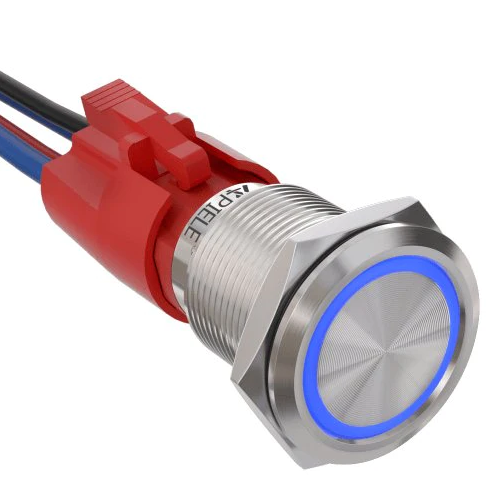Push buttons are everywhere: in boats, doors, airplanes, medical equipment, gaming consoles, and elevators. We can’t just seem to get around them. And now comes the common question can we automate them? Even better yet, get to be linked up with a PC? Yes, that’s all possible and to guide you through, keep on reading
Understanding the Basics: What is a Push Button Switch?
Now, on basics, the push-button switch is a versatile device that completes or interrupts an electric current when pressed. These switches are commonly used for manual input in various electronic applications and serve as triggers for specific actions. So, before connection you have to get the right switch.
Choosing the Right Switch for Your Setup
This is the part where you ensure the push-button switch suits your objectives. Consider factors such as design, actuation force, and lifespan of the switch, which are critical to its compatibility and longevity in your setup. Also, determine whether you need a momentary or latching switch depending on whether you want a temporary or sustained connection.
Navigating the Electrical Landscape: Wiring Essentials
Understanding how the wiring is done is very important if the integration is to be successful. First, find out which terminals are intended for switches; these terminals are usually named NO (Normally Open) and NC (Normally Closed). In this case, for simple circuitry, look at the NO terminal that opens when the push button is released and will close whenever it is depressed.
Go ahead and interconnect the NO terminal to a dedicated GPIO (General Purpose Input/Output) pin on your PC. Be careful when making connections to ensure they are secure and remain stable throughout. Use proper wiring tools and methods to avoid problems such as loose connections or electrical interference.
Role of Resistors: Maintaining Stability
In some situations, it becomes necessary to include resistors in the circuit. The purpose of resistors here is critical in maintaining constant current flowing and preventing possible damages to both switch and connected PC. Select a suitable value of resistor based on switch specs and voltage requirements of your PC’s GPIO pins.
Setting Up Software: Assigning Functions to the Switch
The next step involves configuring software so that it identifies and reacts with touch button input once you have already made a hardware connection. This process may change depending on OS supported by your computer as well as what specific actions you would like associated with that button.
If you are using Windows, go to Control Panel or the Settings menu to find “Devices” or “Hardware”. You can even bind a function or a macro to the newly connected push button switch on input devices or controllers.
A switch’s action can also be scripted by Linux users. Commands such as “xev” can highlight the keycodes relating to the button and then other commands like “xbindkeys” could designate these codes towards certain functions or orders.
Testing and Troubleshooting: Ensuring Seamless Functionality
Once both hardware and software configurations are set in position, there should be rigorous testing. It is necessary to verify that there is response from the switch by running several tests on it and that assigned actions are performed accurately. Look out for possible latency issues and misconfigurations that can hinder smooth operation.
When things go wrong, try troubleshooting the system by revisiting wiring, resistor values and software configurations. Some common mistakes may include disconnected wires, resistors with wrong values, incorrect software mappings among others. Address each probable cause sequentially to identify the problem and rectify it.
Exploring Advanced Configurations: Macros and Customization
For users wanting a more advanced setup, exploring advanced configurations like macros and customization can open up new possibilities. Some computer software applications and operating systems have tools that allow users to execute long chains of actions with just one button push. Take advantage of this functionality in order to customize your setup for specific workflows or gaming situations.
Conclusion: Harnessing the Power of Push-Button Connectivity
To sum up, integration of a push-button switch into a PC setup is not possible without an organized approach. This ranges from selecting the right switch, understanding wiring essentials, configuring software, and troubleshooting issues to seamless connection on each step.
Ready to infuse innovation into your computing set-up? Well, you may want to start with push button selection, so visit APIELE today. Here, you get several switches as well as components that will help you customize your PC experience according to your needs.


